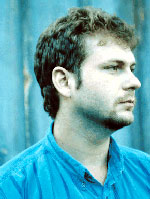 Finally back home, after spending a week on the road for a few meetings around the country, including the NCEES Uniform Procedures and Legislative Guidelines committee meeting, to which I was recently appointed, to discuss the 5-year review of the NCEES Model Law and Rules and other associated charges, and a couple of days at the Pennsylvania Surveyors Conference.
Finally back home, after spending a week on the road for a few meetings around the country, including the NCEES Uniform Procedures and Legislative Guidelines committee meeting, to which I was recently appointed, to discuss the 5-year review of the NCEES Model Law and Rules and other associated charges, and a couple of days at the Pennsylvania Surveyors Conference.
Amazingly, during the course of one week, US Airways managed to lose one of my bags not once, but twice, on my way down to Florida and then on the way back. The bag did finally show up, but not after it took me a few trips to the store to restock on a few sundries, and not without finally arriving with a trashed wheel.
At any rate, it was a great trip, but I am happy to be home again.
The PSLS Conference was particularly enjoyable, I got to see a lot of old friends and colleagues from around the state, with a great turnout from our PSLS Pocono Chapter, as well as a few friends from the RPLS.COM message board, a few folks from PAMAGIC, and there were a bunch of great sessions to attend... The sessions I attended:
The sessions I attended:
- Introduction to FEMA National Flood Insurance, presented by Wendy Lathrop PLS, CFM - this was a great session, giving an overview of the DFIRM flood maps and data, versus Q3, discussion of the zones and base flood elevations and processes for submitting map amendments, for working with instances of fill and development within a flood zone, and other associated issues -
will post more on FEMA, "Map Modernization" and the DFIRM process in the very near future, as it raises a huge, longstanding concern of mine regarding DFIRM data. Umm, on second thought, NO, I won't post more on my issues and concerns on DFIRMs and MapMod - at least until AFTER the upcoming RFP response...Surveyors use floodplain maps to identify flood-prone areas of sites and to determine the extent of those hazards. We will look at how first Housing and
Urban Development (HUD) and later the Federal Emergency Management Agency (FEMA) began mapping flood hazard areas, how the process has changed over the years, and the surveyor’s role in updating and correcting those maps. Regulations and use of the appropriate forms provide practical background when serving our clients and protecting ourselves from liability - Records Research, presented by Lionel "Buck" Alexander PLS & Charles Colony PE PLS - this was a great session on cadastral research and locating legal records from a variety of sources, not just deed books, but registers of wills, orphans' court, road dockets, and many other sources.
This workshop will cover how a deed research is started and completed. It will look at indexing systems, reading and interpreting deeds for chain of title, and the use of plats and plans in deed research, wills, estates, and tax sales as related to deed research will be discussed.
- Survey Measurement Analysis, presented by Chuck Ghilani, Ph.D. - this one featured analysis and propagation of error, and adjustment of error via least squares.
This workshop will present and demonstrate the basic statistical analysis necessary to perform least squares adjustments. It will describe methods for
analyzing and adjusting measurements to account for their errors. This workshop seeks to furnish theoretical understanding and demonstrate computer-aided application to common survey types including level networks, horizontal survey measurement networks, and GPS baseline networks. - Easements and Rights of Way, presented by Gary Kent - this session gave a great overview of some of the legal aspects of easements and rights-of-way, in how easements and rights-of-way can be formed either through written or unwritten means (such as by necessity), along with case law and other great info.
This workshop has the overall objective of helping surveyors more fully understand the types, elements and nature of easements, both written and
unwritten. Specific performance objectives include improving participants'
knowledge base such that after attending this workshop, they are able to: define what is an easement, outline the various types of easements, explain the difference between appurtenant easements and easements in gross, explain the difference between an easement and a license, identify the ways in which easements can be created and terminated, identify the types of unwritten easements and explain the nature of each type of unwritten easement. - Dendrology & Forest Ecology, presented by Tim Pierson Ph.D. & Ken Comstock PLS
This session provided a great overview of forestry - types of trees, mensuration and valuation of trees, forest growth and sustainability and history of Pennsylvania's forests and forest stewardship.Tree identification and understanding of the uses and values of our timber heritage. Also, the study of forest growth and the relationship of trees to our environment, and to our work as surveyors.




I feel for you folks in the NE who have to fly US Airways.
Good overview. I'd be interested to know more about forest dendrology and surveying.
What is the Model Law all about Dave?
The NCEES Model Law is geared toward making the inconsistencies in licensing as a professional engineer or surveyor more transparent. Some of the areas it deals with are in continuing education, academic and work credentials, definition of practice, and so on. US states and jurisdictions are gradually moving toward adopting parts of the Model Law.